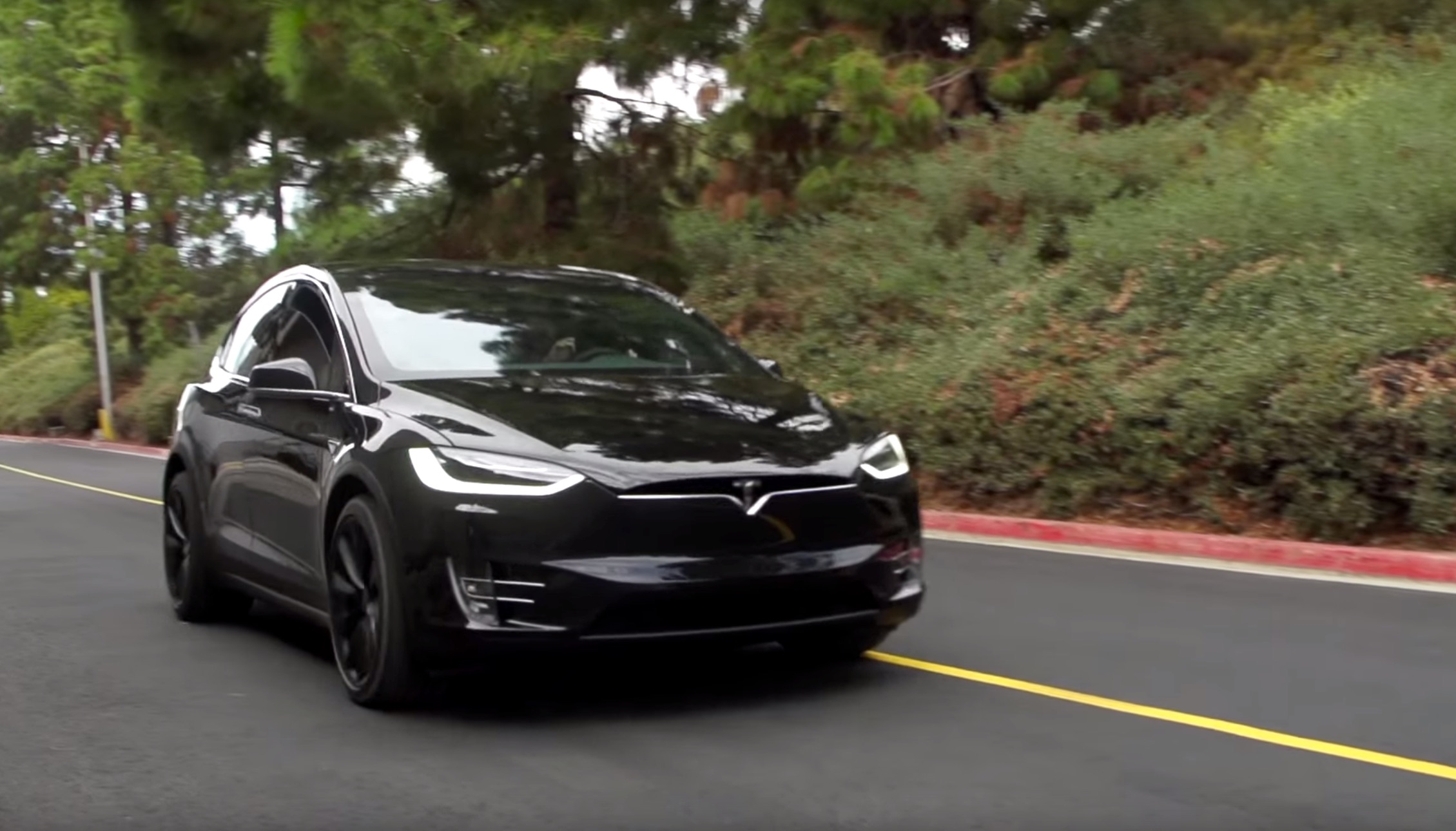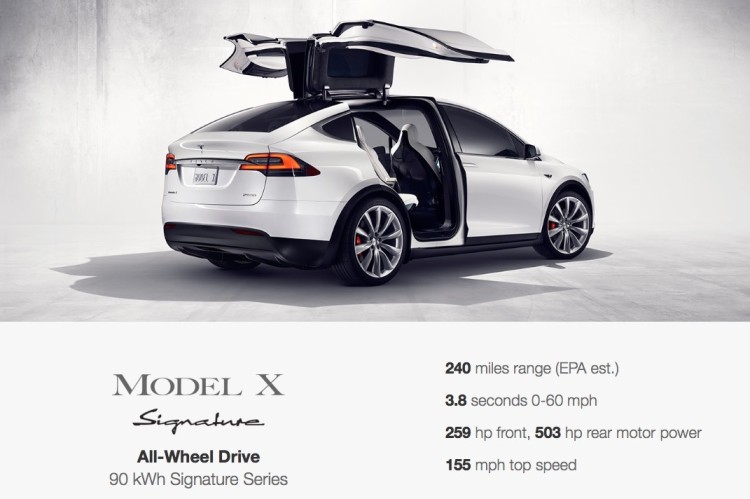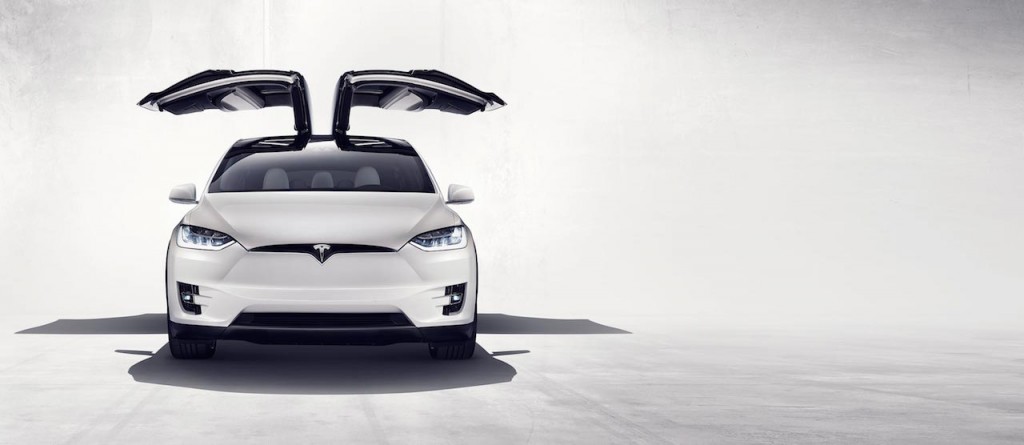News
Thoughts About the Model X from a Model S Owner

Here’s a little story about my journey to becoming a Model X owner. I started my search for a new car roughly two years ago to replace my aging Acura MDX SUV. Gas prices were at an all time high back then and having a monthly expenditure of $600 for transportation was something I could surely do away with. I did my fair share of research on hybrids in hopes I would eventually choose one as a replacement car, but ultimately dismissed them as an alternative due to the complexities of the powertrain. That was until I ran into Tesla and its Model X. The rest was history.
The Model X Promise
I finally narrowed my search among hybrids and EVs to Tesla’s Model X. The Model S was already available for order at the time and the Model X was still coming soon. I’d driven SUVs for the last 14 years and had an affinity towards them. Needing to survive through the New England winters, while living on a farm with an expanding family, naturally skewed my pursuits for a SUV as it seemed to be the right fit for my lifestyle. Although I had already fallen in love with the Model S, I managed to curb any desires to purchase one and waited patiently on the Model X through much of the second half of 2013 and early 2014.
That was until the Model X delivery estimate began to slip from “early 2014” to “late 2014”, and then again to “second quarter 2015” (it would be postponed yet again later on). I eventually got the hint that the Model X wasn’t going to roll off the production line anytime soon. To make matters worse, my aging SUV was surpassing 200K miles and my kid was becoming of driving age and was to receive the hand-me-down SUV.
I really wanted the Model X but inevitably I started to think about whether the Model S could satisfy my criteria for a new car, as follows:
- Must have plenty of room for carrying around luggage, sports gear, bikes, farm stuff, etc.
- Something I could drive all year round and has maximum safety
- Must have enough room for seven people
I left off the need to have a towing package on my must-have list because in my seven years and 200k miles of ownership on the Acura MDX, I never used its built-in towing capabilities once. The MDX had more than ample space for bikes, which I would place inside the car, and roof mounted equipment using the roof rack.
I watched countless Bjorn Nyland videos and ones from Tesla, so much that I was thoroughly convinced that the Model S (real wheel drive was the only option at the time) could be driven in the harshest of winter environments.
My thoughts around owning a seven seater started to dissipate. When my daughter was young, I would haul her and a pack of her friends around in a seven passenger vehicle. But as she grew up and no longer needed rides other than for a few close friends and her boyfriend (sigh), having a vehicle to seat seven became less of a requirement.
And for that reason, I forewent my Model X and ordered the Model S instead during March of 2014. That turned out to be one of the best decisions I’ve ever made in life.
Longing for the Model X

Despite being happily committed to my Model S as a relatively new owner, I still couldn’t stop myself from thinking about the Model X and ultimately ended up putting down a reservation for one once the Design Studio became available. I had convinced myself that a SUV is what I really wanted from the get go. Perhaps I’d trade my Model S in for the X but I still had time to figure that out.
I had also justified placing a deposit on the Model X because my wife’s SUV, a ML 350 diesel, was starting to experience a lot of mechanical and maintenance issues despite being only 20K miles old (we bought it used). I figured that the X would serve as a great replacement vehicle because frankly I was sick of maintaining her SUV.
Finally, Hello Model X
Nearly two years after I was introduced to the Model X online, I finally witnessed its unveiling, along with the rest of the world, via the Model X online test drive videos. The reactions to it seem generally mixed according to friends that attended the Model X launch event. Don’t get me wrong, the Model X is an amazing and transformative vehicle, but to me I felt that I could not obtain much utility from it over what my Model S is already capable of providing.
Sure I’d love to have all wheel drive, autopilot, and being able to open falcon wing doors in tight parking spaces, but even those features aren’t radically different than newer versions of the Model S, less the falcon wing doors.
The Model X panoramic windshield is cool although I’m not sure I’d welcome that much sunlight on me while driving. The ‘bio weapon defense mode‘ seems gimmicky to me and a feature that feels cooler to talk about than it would live out in the real world.
The falcon wing doors are amazing and unique but I can’t help but think that its complexity will lead to long term maintenance problems for Tesla. And after all the challenges faced with creating the rad falcon wing doors, they compounded difficulties by creating auto opening front doors. And what about the active rear spoiler? Why is it deployed in all pictures? Will it ever retract?
What surprised me the most during Elon’s 30 minute presentation on the Model X was the amount of time he spent describing the vehicle’s safety rating and air filtration capabilities. Compare this presentation to an Apple product launch event that’s typically packed with detailed specifications and you’re left feeling a bit underwhelmed. Does anyone know the cargo room for the Model X? How wide is it? How tall? How long? What is the max height of the falcon wing doors? Do all the seats fold flat? A car that costs over $132,000 shouldn’t have details as vague as they are.
We caught glimpses of Firmware 7.0 features on the Model X, but there’s still no official word from Tesla that a new interface will be launched with the Model X.
My Future with the Model X
Electric vehicles are the future and Tesla is clearly leading the way in this new vertical. From the Roadster, to the Model S, and to the Model X, Tesla continues to innovate and redefine what an automobile should be like.
While I still have my Model X reservation, I want to know a lot more about it, touch it and maybe even drive it before I decide on the fate of my reservation. Fortunately, my wife’s SUV started behaving as of late, and I’m also very happy with my Model S. Now is probably not the best time for me to pick up a new Model X, but I can easily see a day when all my cars will be electric powered — and made by Tesla.

Elon Musk
Elon Musk and Tesla AI Director share insights after empty driver seat Robotaxi rides
The executives’ unoccupied tests hint at the rapid progress of Tesla’s unsupervised Robotaxi efforts.

Tesla CEO Elon Musk and AI Director Ashok Elluswamy celebrated Christmas Eve by sharing personal experiences with Robotaxi vehicles that had no safety monitor or occupant in the driver’s seat. Musk described the system’s “perfect driving” around Austin, while Elluswamy posted video from the back seat, calling it “an amazing experience.”
The executives’ unoccupied tests hint at the rapid progress of Tesla’s unsupervised Robotaxi efforts.
Elon and Ashok’s firsthand Robotaxi insights
Prior to Musk and the Tesla AI Director’s posts, sightings of unmanned Teslas navigating public roads were widely shared on social media. One such vehicle was spotted in Austin, Texas, which Elon Musk acknowleged by stating that “Testing is underway with no occupants in the car.”
Based on his Christmas Eve post, Musk seemed to have tested an unmanned Tesla himself. “A Tesla with no safety monitor in the car and me sitting in the passenger seat took me all around Austin on Sunday with perfect driving,” Musk wrote in his post.
Elluswamy responded with a 2-minute video showing himself in the rear of an unmanned Tesla. The video featured the vehicle’s empty front seats, as well as its smooth handling through real-world traffic. He captioned his video with the words, “It’s an amazing experience!”
Towards Unsupervised operations
During an xAI Hackathon earlier this month, Elon Musk mentioned that Tesla owed be removing Safety Monitors from its Robotaxis in Austin in just three weeks. “Unsupervised is pretty much solved at this point. So there will be Tesla Robotaxis operating in Austin with no one in them. Not even anyone in the passenger seat in about three weeks,” he said. Musk echoed similar estimates at the 2025 Annual Shareholder Meeting and the Q3 2025 earnings call.
Considering the insights that were posted Musk and Elluswamy, it does appear that Tesla is working hard towards operating its Robotaxis with no safety monitors. This is quite impressive considering that the service was launched just earlier this year.
Elon Musk
Starlink passes 9 million active customers just weeks after hitting 8 million
The milestone highlights the accelerating growth of Starlink, which has now been adding over 20,000 new users per day.

SpaceX’s Starlink satellite internet service has continued its rapid global expansion, surpassing 9 million active customers just weeks after crossing the 8 million mark.
The milestone highlights the accelerating growth of Starlink, which has now been adding over 20,000 new users per day.
9 million customers
In a post on X, SpaceX stated that Starlink now serves over 9 million active users across 155 countries, territories, and markets. The company reached 8 million customers in early November, meaning it added roughly 1 million subscribers in under seven weeks, or about 21,275 new users on average per day.
“Starlink is connecting more than 9M active customers with high-speed internet across 155 countries, territories, and many other markets,” Starlink wrote in a post on its official X account. SpaceX President Gwynne Shotwell also celebrated the milestone on X. “A huge thank you to all of our customers and congrats to the Starlink team for such an incredible product,” she wrote.
That growth rate reflects both rising demand for broadband in underserved regions and Starlink’s expanding satellite constellation, which now includes more than 9,000 low-Earth-orbit satellites designed to deliver high-speed, low-latency internet worldwide.
Starlink’s momentum
Starlink’s momentum has been building up. SpaceX reported 4.6 million Starlink customers in December 2024, followed by 7 million by August 2025, and 8 million customers in November. Independent data also suggests Starlink usage is rising sharply, with Cloudflare reporting that global web traffic from Starlink users more than doubled in 2025, as noted in an Insider report.
Starlink’s momentum is increasingly tied to SpaceX’s broader financial outlook. Elon Musk has said the satellite network is “by far” the company’s largest revenue driver, and reports suggest SpaceX may be positioning itself for an initial public offering as soon as next year, with valuations estimated as high as $1.5 trillion. Musk has also suggested in the past that Starlink could have its own IPO in the future.
News
NVIDIA Director of Robotics: Tesla FSD v14 is the first AI to pass the “Physical Turing Test”
After testing FSD v14, Fan stated that his experience with FSD felt magical at first, but it soon started to feel like a routine.

NVIDIA Director of Robotics Jim Fan has praised Tesla’s Full Self-Driving (Supervised) v14 as the first AI to pass what he described as a “Physical Turing Test.”
After testing FSD v14, Fan stated that his experience with FSD felt magical at first, but it soon started to feel like a routine. And just like smartphones today, removing it now would “actively hurt.”
Jim Fan’s hands-on FSD v14 impressions
Fan, a leading researcher in embodied AI who is currently solving Physical AI at NVIDIA and spearheading the company’s Project GR00T initiative, noted that he actually was late to the Tesla game. He was, however, one of the first to try out FSD v14.
“I was very late to own a Tesla but among the earliest to try out FSD v14. It’s perhaps the first time I experience an AI that passes the Physical Turing Test: after a long day at work, you press a button, lay back, and couldn’t tell if a neural net or a human drove you home,” Fan wrote in a post on X.
Fan added: “Despite knowing exactly how robot learning works, I still find it magical watching the steering wheel turn by itself. First it feels surreal, next it becomes routine. Then, like the smartphone, taking it away actively hurts. This is how humanity gets rewired and glued to god-like technologies.”
The Physical Turing Test
The original Turing Test was conceived by Alan Turing in 1950, and it was aimed at determining if a machine could exhibit behavior that is equivalent to or indistinguishable from a human. By focusing on text-based conversations, the original Turing Test set a high bar for natural language processing and machine learning.
This test has been passed by today’s large language models. However, the capability to converse in a humanlike manner is a completely different challenge from performing real-world problem-solving or physical interactions. Thus, Fan introduced the Physical Turing Test, which challenges AI systems to demonstrate intelligence through physical actions.
Based on Fan’s comments, Tesla has demonstrated these intelligent physical actions with FSD v14. Elon Musk agreed with the NVIDIA executive, stating in a post on X that with FSD v14, “you can sense the sentience maturing.” Musk also praised Tesla AI, calling it the best “real-world AI” today.











